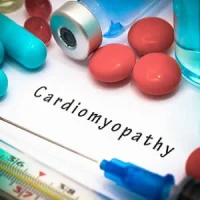According to a new study in JAMA, the use of an inhaler with inorganic nitrite was not effective in improving exercise capacity in patients with heart failure with preserved ejection fraction (HFpEF).
In this multicentre randomised clinical trial that included 105 patients with HFpEF, researchers found that inhaled inorganic nitrite compared with placebo for 4 weeks resulted in an exercise capacity (measured as peak oxygen consumption) of 13.5 versus 13.7 mL/kg/min, a difference that was not statistically significant.
There are few effective treatments for HFpEF. Short-term administration of inorganic nitrite or nitrate preparations has been shown to enhance nitric oxide signalling, which may improve aerobic capacity in HFpEF. However, this approach, as noted by the researchers, has not been tested with longer-term use or in a multicentre trial.
The new study was a double-blind, placebo-controlled, two-treatment, crossover trial of 105 patients with HFpEF conducted at 17 U.S. Participants were enrolled from 22 July 2016 to 12 September 2017, with final date of follow-up of 2 January 2018. Inorganic nitrite or placebo was administered via micronebuliser device. During each 6-week phase of the crossover study, participants received no study drug for 2 weeks (baseline/washout) followed by study drug (nitrite or placebo) at 46 mg 3 times a day for 1 week followed by 80 mg 3 times a day for 3 weeks.
The primary end point was peak oxygen consumption (mL/kg/min). Secondary end points included daily activity levels assessed by accelerometry, health status as assessed by the Kansas City Cardiomyopathy Questionnaire (score range, 0-100, with higher scores reflecting better quality of life), functional class, cardiac filling pressures assessed by echocardiography, N-terminal fragment of the prohormone brain natriuretic peptide levels, other exercise indices, adverse events, and tolerability. Outcomes were assessed after treatment for 4 weeks.
Among 105 patients who were randomised (median age, 68 years; 56% women), 98 (93%) completed the trial. During the nitrite phase, there was no significant difference in mean peak oxygen consumption as compared with the placebo phase (13.5 vs. 13.7 mL/kg/min; difference, −0.20 [95% CI, −0.56 to 0.16]; P = .27).
In addition, there were no significant between-treatment phase differences in daily activity levels (5497 vs. 5503 accelerometry units; difference, −15 [95% CI, −264 to 234]; P = .91), Kansas City Cardiomyopathy Questionnaire Clinical Summary Score (62.6 vs. 61.9; difference, 1.1 [95% CI, −1.4 to 3.5]; P = .39), functional class (2.5 vs. 2.5; difference, 0.1 [95% CI, −0.1 to 0.2]; P = .43), echocardiographic E/e′ ratio (16.4 vs. 16.6; difference, 0.1 [95% CI, −1.2 to 1.3]; P = .93), or N-terminal fragment of the prohormone brain natriuretic peptide levels (520 vs. 533 pg/mL; difference, 11 [95% CI, −53 to 75]; P = .74). Worsening heart failure occurred in three participants (2.9%) during the nitrite phase and eight (7.6%) during the placebo phase.
These findings are in contrast to multiple earlier studies suggesting administration of inorganic nitrite or nitrate may have benefits in HFpEF.
"The reasons for the discrepant findings are not clear. While the half-life of inhaled nitrite is short (approximately 40 minutes), study medication was administered immediately prior to exercise testing in this study," the researchers note. "There was no improvement in echocardiographic markers of cardiac filling pressures and no increase in plasma cGMP [cyclic guanosine monophosphate] levels with nitrite, but these assessments were performed at trough rather than peak drug levels, and blood pressure was reduced, suggesting that a biological effect was achieved at the time of peak concentrations."
The research team also says the absence of benefit with inhaled nitrite may relate to its short plasma half-life or the relatively brief duration of the trial (4 weeks), which might not have allowed adequate exposure to observe a favourable effect on cardiovascular structure and function.
"The only intervention that has been consistently shown to improve aerobic capacity in HFpEF is exercise training, and perhaps it is necessary in future trials to couple cardiovascular medicines (such as nitrite) with concomitant exercise training and/or weight loss to achieve meaningful improvements in functional capacity," the researchers add.
Source: JAMA
Image Credit: iStock
References:
Borlaug BA, Anstrom KJ, Lewis GD et al. for the National Heart, Lung, and Blood Institute Heart Failure Clinical Research Network
(2018) Effect ofInorganic Nitrite vs Placebo on Exercise Capacity Among Patients With Heart Failure With Preserved Ejection Fraction:The INDIE-HFpEF Randomized Clinical Trial. JAMA; 320(17):1764-1773. doi:10.1001/jama.2018.14852
Latest Articles
heart failure, HFPEF, inhaled inorganic nitrite
According to a new study in JAMA, the use of an inhaler with inorganic nitrite was not effective in improving exercise capacity in patients with heart failure with preserved ejection fraction (HFpEF).










